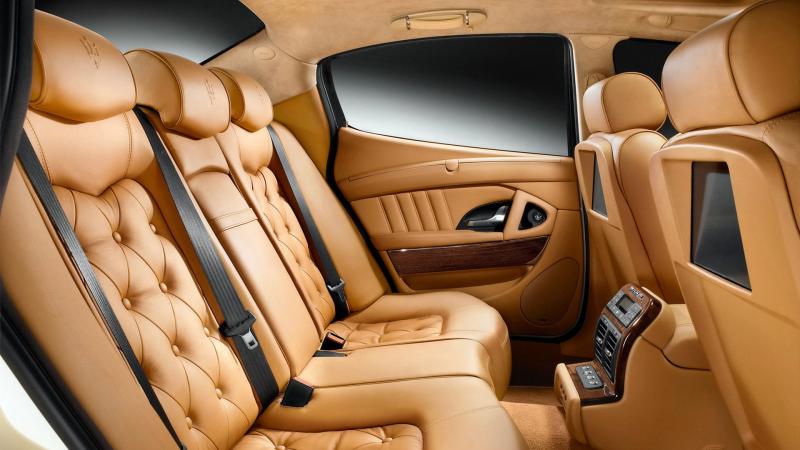Automotive Interior Leather: A Premium Choice for Luxury and Comfort - Exploring Types, Treatments, and the Future of Exquisite Vehicle Interiors
Automotive Interior Leather: A Premium Choice for Luxury and Comfort
Leather has long been considered a premium material for automotive interiors. Auto manufacturers use high quality leather upholstery to convey a sense of luxury, prestige and comfort. In this article, we will explore why leather remains a top choice for luxury vehicle interiors and the various types and qualities of leather used.
Why Leather Remains Popular
Some key reasons why leather continues to be a popular interior material for luxury vehicles include:
Durability and Longevity
Luxury leather upholstery is designed to withstand wear and tear over many years of use. Properly maintained leather interiors can last the lifetime of a vehicle with their rich appearance intact. Leather resists cracking and damage better than synthetic or vinyl materials. The high durability reduces replacement costs and keeps interiors looking new longer.
Superior Comfort and Feel
The natural texture and breathability of leather makes it pleasant and comfortable against human skin. It does not collect heat like vinyl and remains cool in warm weather. The soft feel and "gripped" seating surfaces offer enhanced support. This superior tactile experience enhances the luxury perception for passengers.
Allergen Resistance
Manufacturers use specialized treatments and finishes on automotive leather to make it highly resistant to mold, mildew, bacteria and dust mites that can trigger allergies. It does not tear or crack like other materials to expose passengers to allergens over time.
Appearance and Customization
The limitless possibilities for rich leather colors, stitching, embossed designs and other customizations allow buyers to individualize the look. No two leather interiors have to look the same. This enhances the prestige and exclusivity of high-end vehicles.
Types of Leather Used in Luxury Vehicle Interiors
Full Grain Leather
Considered the finest quality, full grain leather uses the entire unsplit animal hide. It contains the most natural textures and unique markings. Being the thickest cut, it wears exceptionally well and develops a beautiful patina with age. Luxury brands commonly use full grain leather for premium seating, dashboards and door panels.
Top Grain Leather
A higher grade than synthetic leather, top grain utilizes the outer layer of the hide but may undergo light buffing to produce a more consistent appearance. It has superior appearance and feel to synthetics at a lower cost than full grain. Many mid-luxury models use top grain leather for a balance of quality and value.
Semi-Aniline Leather
This is full grain leather that undergoes light dyeing and protective processes to modify the natural appearance and increase stain resistance. The natural textures remain largely intact and breathability is excellent. It provides a step up from top grain at a lower price point than full aniline.
Leather Processes and Treatments
Beyond the type of leather cut, various processes enhance leather's durability, appearance and resistance to stains, oils and abrasions in a vehicle cabin environment. Some key treatments include:
Dyeing and Pigmentation
Precise dying techniques deliver the rich and nuanced shades valued by luxury buyers. Manufacturers precisely blend pigments to achieve target colors across different hide grades and sections.
Fat Liquoring
Animal fats or oils applied to the leather fill pores and improve suppleness and wear resistance. It enhances the leather's ability to retain color and resist cracking.
Finishing and Protective Coatings
Topcoats of acrylic, polyurethane and other materials protect leather surfaces from soiling and UV damage while maintaining breathability. Special non-yellowing finishes preserve color over decades.
Antimicrobial Treatments
Manufacturers infuse leather with silver, copper and other antimicrobials to prevent the growth of bacteria, fungi and other microbes that can lead to odors and deterioration.
Embroidery, Perforations and Decorative Stitches
Various accents individualize luxury leather by complementing tailored seams, accented leather sections and precise perforation patterns for ventilation.
The Future of Luxury Leather Interiors
As awareness of sustainability grows, some auto brands are exploring vegetable-tanned and chromium-free leathers from traceable, small-batch processors. Leather produced through organic agriculture and less harsh processes appeals to health and eco-conscious buyers. Innovation continues in synthetic leathers closely duplicating the luxury qualities with lower cost and environmental impact as well. For now, nothing quite matches the authenticity, exclusivity and unmatched longevity of fine automotive-grade leathers processed using traditional methods. With advances in sustainability and customized solutions, luxury leather looks ensured to remain a staple in high-end vehicles for many years to come.
Automotive leather upholstery offers unparalleled sensory experiences that heighten the luxury perception for owners and passengers. Manufacturers utilize only the finest cuts and most durable processes to create interiors retaining their rich appearance and comfort through decades of use. The endless possibilities for customization allow drivers to make uniquely theirs this timeless symbol of prestige, quality and superb tactile satisfaction.
Get more insights on this topic :
